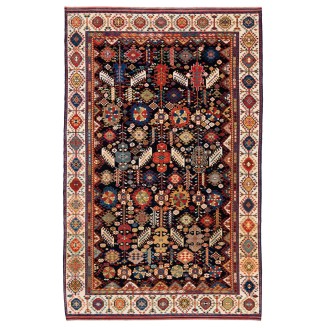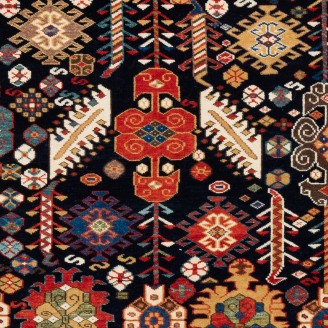Shirvan Rug with Hexagon Columns
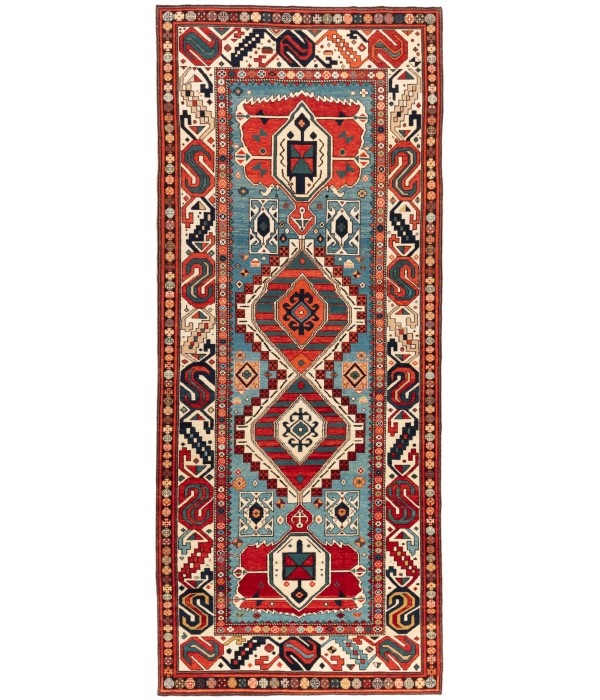
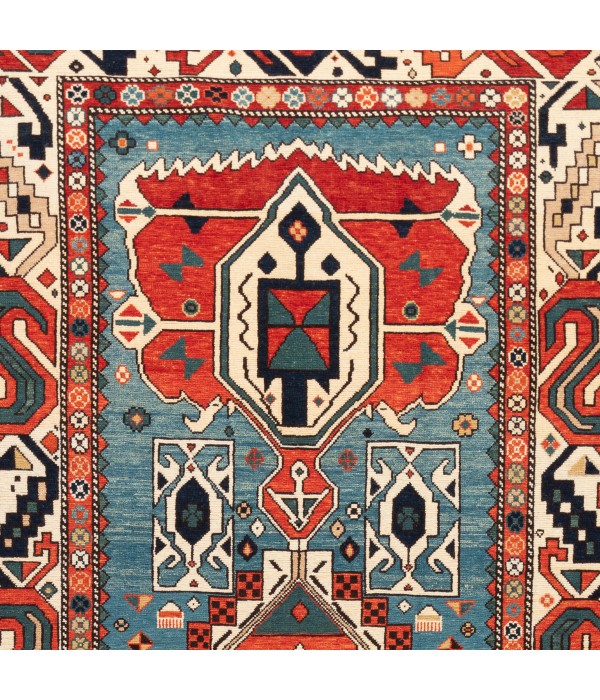
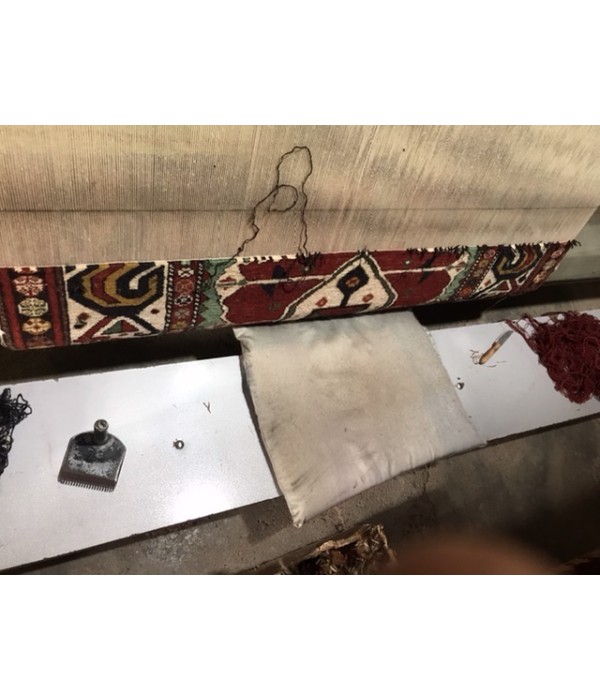
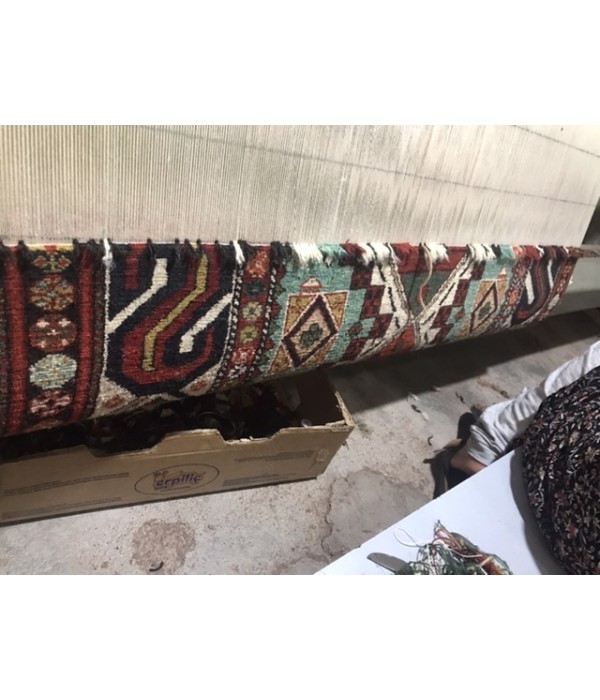
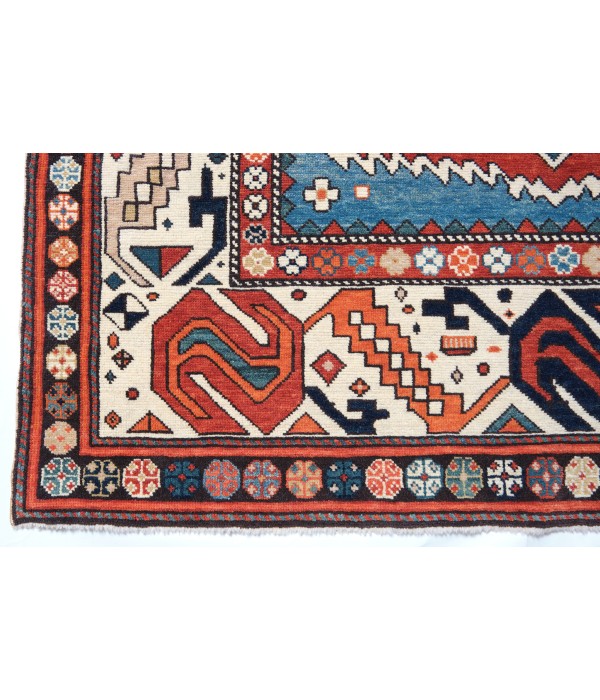
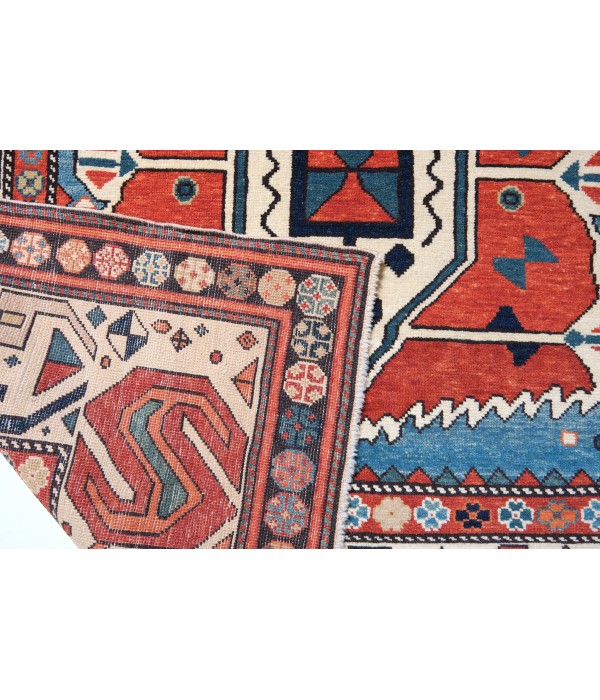
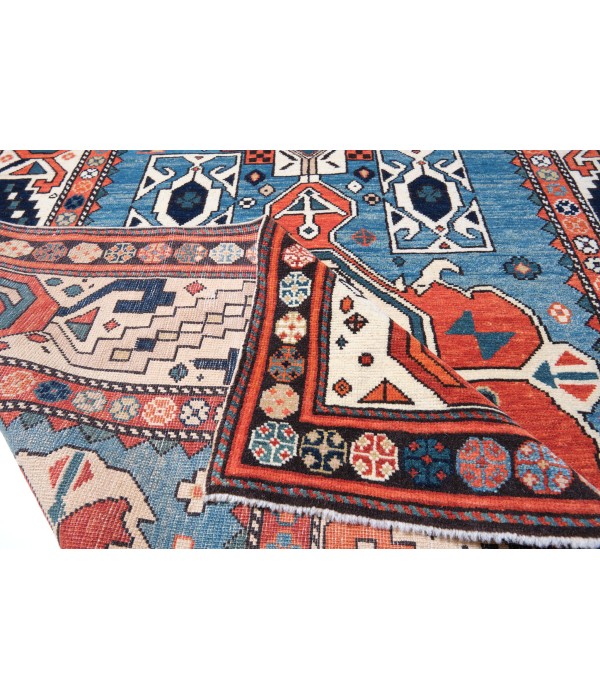
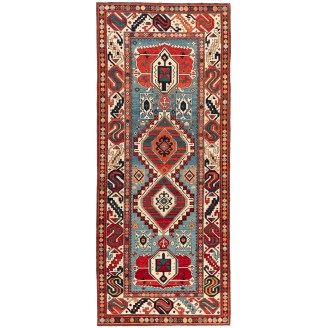
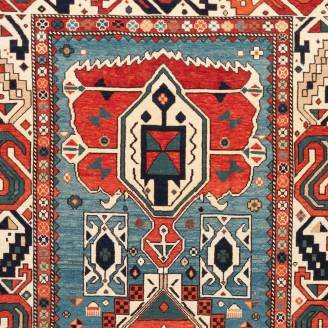
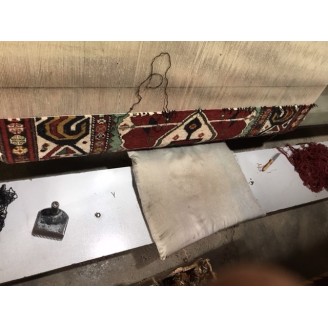
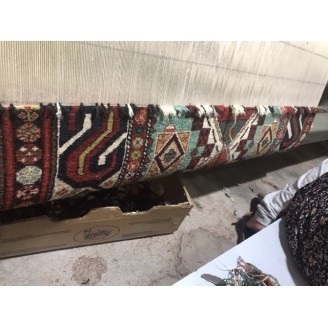
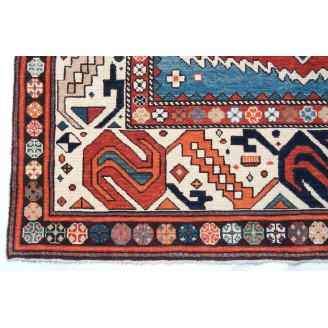
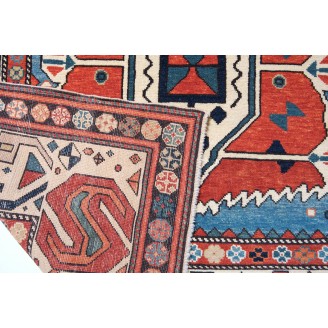
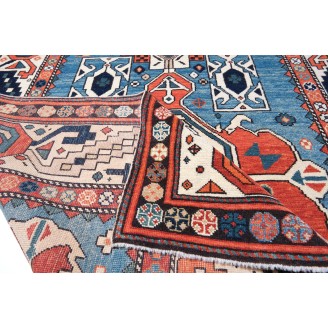
Model: ART00026Shirvan Rug with Hexagon Columns
Group: Caucasian Rugs Family
Area: Shirvan region
Material of Pile: Natural Dyed Hand-spun Wool
Material Warp / Weft: Wool on Cotton
Structure: Symmetrical knot
Knots Density: 35x42
Pile (mm): 4
Production Place: Southeastern Anatolia – Diyarbakir - Derviş Hasan
Pattern Code: 1537
Location: Tokyo
Stock: In Stock
Dimensions:
The source of the rug comes from the book Oriental Rugs Volume 1 Caucasian, Ian Bennett, Oriental Textile Press, Aberdeen 1993, nr.256. This is a hexagon columns rug from the late 19th century, Shirvan region, Caucasus area. This represents a well-known type of Shirvan carpet composition which has rows of stepped-edged and conjoined hexagonal motifs arranged in a single vertical row, with a flattened, saw-edged medallion at either end of the row; some authors have related the latter motif to ancient Egyptian and Persian Royal insignia. Some examples, such as that illustrated in Raymond Benardout's Caucasian Rugs (p.51), large saw-edged medallions are found in a single vertical row, with small hexagons at their centers. In general, the idea was borne out by their resemblance to so-called 'Zejwa' rugs from the area south of Kuba. As with all generalizations about Caucasian weavings, however, there are numerous exceptions-for instance the cotton-weft piece with white cotton overcast sides illustrated in Murray Eiland's Oriental Rugs (nr.159), the two examples with similar structure in Richard Purdon's Shirvan and related Weavings from the North Caucasus (nr. 2 and 3), and the cotton-weft rug with blue cotton overcasting illustrated in Peter Bausback's 1976 catalog (p.89). These rugs almost all have dark blue fields with myriad filler ornaments including animals, birds, and human figures; a yellow-ground border with linked 'S' motifs is a commonly found-a border which, both in color and design, is also found in north Persian tribal and village rugs (cf. Jenny Housego, Tribal Rugs, pl. 82). The first is illustrated in the Australian Society for Antique Rugs' 1974 catalog, Antique Rugs from the Caucasus (no. 13), with the date read as 1902, although I prefer the reading 1304 A.H. (A.D. 1886/7). The second dated example of this type came to light recently in a provincial auction in England (Elliott and Green, Lymington, 28 June 1979, lot 363); this had the specific field and 'interlock' border composition, also similar to our 261, was dated 1333 A.H. (A.D. 1914) and was of very good quality apart from the albeit sparing use of synthetic orange and pink. The present rug is very similar to examples in the Metropolitan Museum (Dimand, no. 174) and in Schürmann's book (no. 66). The design of the rug is interpreted by our designers, and the most appropriate colors to match the original is used for this rug.
Color summary: 10 colors in total, most used 4 colors are;
Color summary: 10 colors in total, most used 4 colors are;
- Wool Color 320 (Natural Sheep's Color)
- Imperial Red 415 (Madder Root)
- Dark Brown 316 (No Dye - Sheep’s Own Color )
- Cadet Blue 26 (Indigo - Spurge)
Dimensions:
4 ft 2 in x 9 ft 11 in ( 128cm x 303cm )
Price:
$6,800
Ex Tax: $6,800
Ask a Question About This Product
Tags:
Runner

